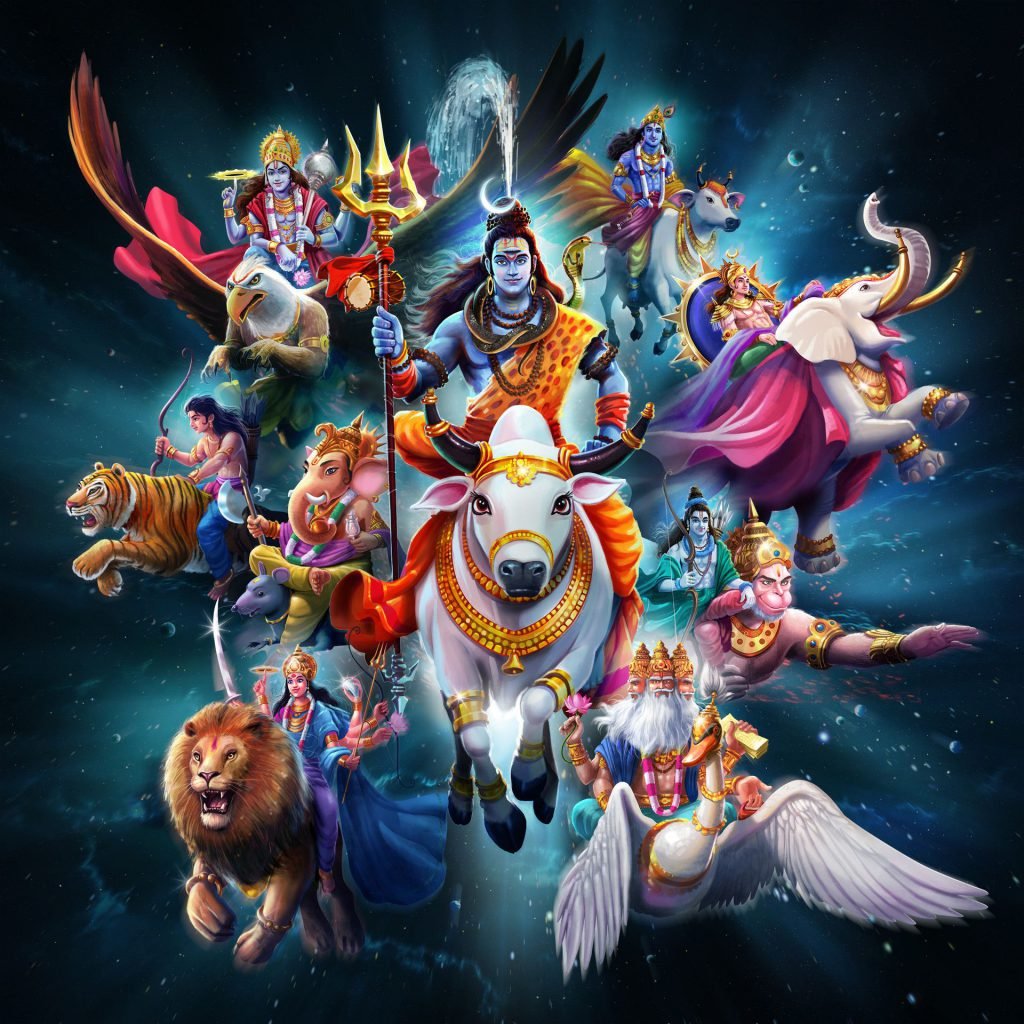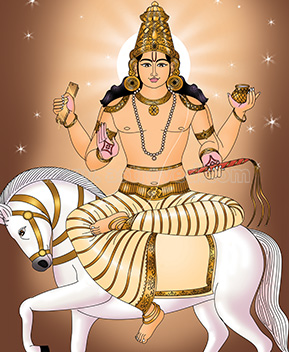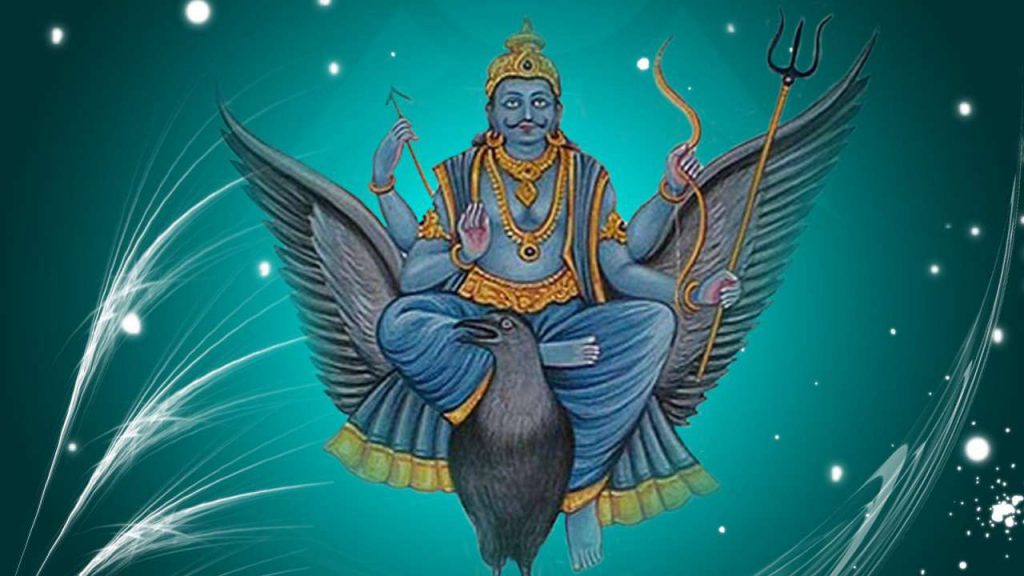Shiva – The God of Destruction
by
Subhamoy Das
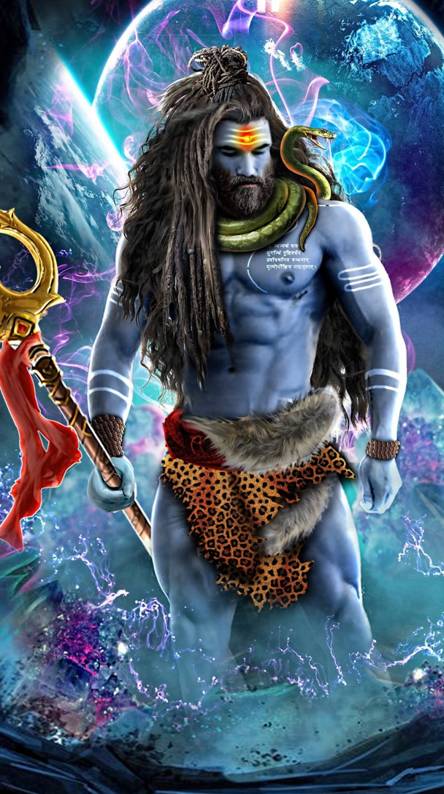
Known by many names—Mahadeva, Mahayogi, Pashupati, Nataraja, Bhairava, Vishwanath, Bhava, Bhole Nath—Lord Shiva is perhaps the most complex of Hindu deities, and one of the most powerful. Shiva is ‘shakti’ or power; Shiva is the destroyer—the most powerful god of the Hindu pantheon and one of the godheads in the Hindu Trinity, along with Brahma and Vishnu. As recognition of this fact, Hindus isolate his shrine separate from those of other deities in the temple.
An Introduction to Lord Shiva
Shiva as Phallic Symbol
In temples, Shiva is usually is depicted as a phallic symbol, the ‘linga,’ which represents the energies necessary for life on both the microcosmic and the macrocosmic levels—both the world in which we live and the world which constitutes the whole of the universe. In a Shaivite temple, the ‘linga’ is placed in the center underneath the spire, where it symbolizes the navel of the earth.
The popular belief is that the Shiva Linga or Lingam represents the phallus, the generative power in nature. But according to Swami Sivananda, this is not only a serious mistake but also a grave blunder.
A Unique Deity
The actual image of Shiva is also uniquely different from other deities: his hair is piled high on the top of his head, with a crescent tucked into it and the river Ganges tumbling from his hair. Around his neck is a coiled serpent representing Kundalini, the spiritual energy within life. He holds a trident in his left hand, in which is bound the ‘damroo’ (small leather drum). He sits on a tiger skin and on his right is a water pot. He wears the ‘Rudraksha’ beads, and his whole body is smeared with ash. Shiva is also often portrayed as the supreme ascetic with a passive and composed disposition. Sometimes he is depicted riding a bull called Nandi, decked in garlands. A very complicated deity, Shiva is one of the most fascinating of Hindu gods.
The Destructive Force
Shiva is believed to be at the core of the centrifugal force of the universe, due to his responsibility for death and destruction. Unlike the godhead Brahma the Creator, or Vishnu the Preserver, Shiva is the dissolving force in life. But Shiva dissolves to create since death is necessary for rebirth into a new life. So the opposites of life and death, creation and destruction, both reside in his character.
The God Who’s Always High!
Since Shiva is regarded as a mighty destructive power, to numb his negative potentials, he is fed with opium and is also termed as ‘Bhole Shankar’— one who is oblivious of the world. Therefore, on Maha Shivratri, the night of Shiva worship, devotees, especially the men, prepare an intoxicating drink called ‘Thandai’ (made from cannabis, almonds, and milk), sing songs in praise of the Lord and dance to the rhythm of the drums.
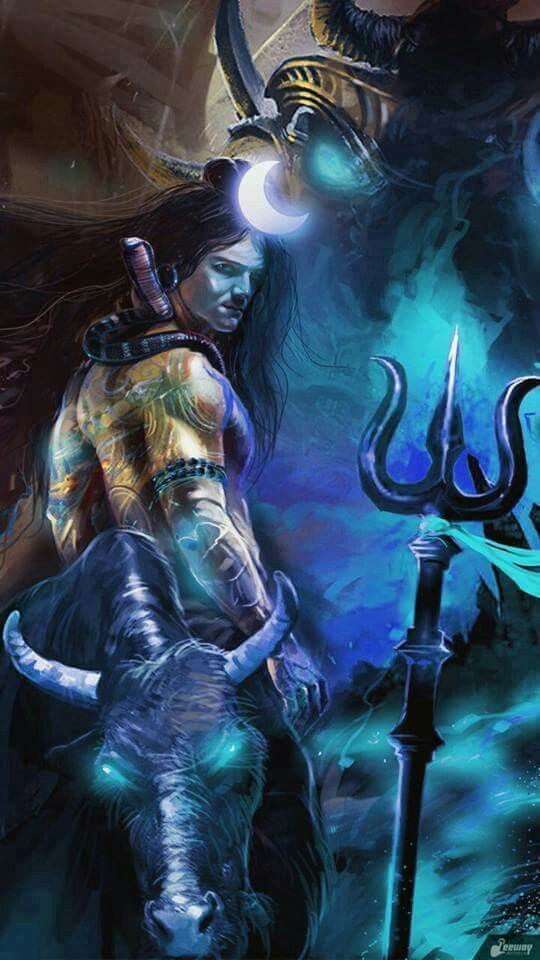
According to Hindu mythology, during the Puranic Age, Gods and Goddesses were glorified as supreme beings in various eulogizing texts full of amazing stories – in the Puranas.
The Shiva Purana
In the Shiva Purana, Lord Shiva is celebrated in the five elements of Nature governed by him – Earth, Water, Fire, Air, and Space. Each of these elements is symbolized and worshiped in the form of a Linga, the formless form of Shiva.
The Shiva Purana also mentions 64 manifestations of Lord Shiva. Prof. K. Venkatachari, a noted artist, in his book Manifestations of Lord Shiva, brings to life a dozen such manifestations through beautiful illustrations.
The Most Popular Stories of Shiva, the Destroyer
Lord Shiva is one of three principle Hindu deities, along with Brahma and Vishnu. Especially in Shavais—one of the four main branches of Hinduism, Shiva is regarded as the Supreme Being responsible for creation, destruction, and everything in between. For other Hindu sects, Shiva’s reputation is as the Destroyer of Evil, existing on equal footing with Brahma and Vishnu.
It is no surprise, then, that legends and mythological tales surround Lord Shiva abound. Here are a few of the most popular ones:
The Creation of the Ganges River
A legend from the Ramayana speaks of King Bhagirath, who once meditated before Lord Brahma for a thousand years for the salvation of the souls of his ancestors. Pleased with his devotion, Brahma granted him a wish; the king then requested that the Lord send the river goddess Ganges down to earth from heaven so that she could flow over his ancestors’ ashes and wash their curse away and allow them to go to heaven.
Brahma granted his wish but requested that the king first pray to Shiva, for Shiva alone could support the weight of Ganga’s descent. Accordingly, King Bhagrirath prayed to Shiva, who agreed that Ganga could descend while entwined in the locks of his hair. In one variation of the story, an angry Ganga tried to drown Shiva during the descent, but the Lord powerfully held her motionless until she relented. After meandering down through Shiva’s thick matted locks, the holy river Ganges appeared on earth.
For modern Hindus, this legend is re-enacted by a ceremonial ritual known as bathing the Shiva Lingam.
The Tiger and the Leaves
Once a hunter who was chasing a deer wandered into a dense forest found himself on the banks of river Kolidum, where he heard the growl of a tiger. To protect himself from the beast, he climbed up a tree nearby. The tiger pitched itself on the ground below the tree, demonstrating no intention to leave. The hunter stayed up in the tree all night and to keep himself from falling asleep, he gently plucked one leaf after another from the tree and threw it down.
Under the tree was a Shiva Linga, and the tree blessedly turned out to be a bilva tree. Unknowingly, the man had pleased the deity by casting bilva leaves down upon the ground. At sunrise, the hunter looked down to find the tiger gone, and in its place stood Lord Shiva. The hunter prostrated himself before the Lord and attained salvation from the cycle of birth and death.
To this day, bilva leaves are used by modern believers in ritual devotions to Shiva. The leaves are thought to cool the deity’s fierce temperament and to resolve even the worst karmic debt.
Shiva as a Phallus
According to another legend, Brahma and Vishnu, the two other deities of the holy Trinity, once had an argument over who was more supreme. Brahma, being the Creator, declared himself to be more revered, while Vishnu, the Preserver, pronounced that it was he commanded more respect.
Just then a colossal lingam (Sanskrit for phallus) in the form of an infinite pillar of light, known as a Jyotirlinga, appeared blanketed in flames before them. Both Brahma and Vishnu were awestruck by its rapidly increasing size, and, forgetting their quarrel, they decided to determine its dimensions. Vishnu assumed the form of a boar and went to the netherworld, while Brahma became a swan and flew to the skies, but neither was able to fulfill their task. Suddenly Shiva appeared out of the lingam and stated that he was the progenitor of both Brahma and Vishnu, and that henceforth he should be worshiped in his phallic form, the lingam, and not in his anthropomorphic form.
This tale is used to explain why Shiva is often represented iconically in the form of a Shiva Linga carving in Hindu devotions.
Other Hindu Gods
Features
Copyright © 2018 SEAN-O-VISTA

Powered with 
